In this article, you will learn how to insert an equation in Excel. If you do mathematics-related reports or assignments with Excel, you have to know the methods to insert equations. In this tutorial, we will learn some easy ways to do so.
Here, we will learn 3 easy ways to enter equations in Excel. To describe the methods, we have used some excellent examples with screenshots and explanations. So, without further delay, let’s get started.
1. Using Equation Command to Insert Equation in Excel
In this method, we shall learn how to use the Equation Editor for inserting equations effectively in Excel. We can use the Equation Editor both for predefined equations and also for creating a new equation as per our wish.
- To use the Equation Editor, first, go to the Insert tab.
- After that, click on Symbols.
1.1 Inserting Predefined Equation
If we want to assign a predefined equation then we need to follow the steps below.
Steps:
- Firstly, Insert tab > Symbols group.
- From the Symbols group, click on the Equation dropdown.
- For this reason, a list of equations will appear.
- Now, click on the equation that you need.
- For example, we selected the equation of the Fourier Series.
- Hence, the equation will be inserted into the worksheet.
1.2 Creating New Equation
We can also create a new equation by using the Excel Equation Editor. Here, we will make the Volume formula. The formula is like the picture below.
Steps:
- First of all, select Insert tab > Symbols group.
- Accordingly, click on the Equation command.
- In turn, the Equation Editor appears.
- When the Equation Editor is selected, two contextual tabs appear in the tab list. They are Shape Format and Equation.
- However, the Equation Editor is a shape.
- So, you can format the shape using the Shape Format tab.
- The other tab is the Equation contextual tab. It will help you to insert an equation into the Equation Editor.
- To write an equation in the Equation Editor, first, go to the Equation tab.
- Consequently, you can see the Symbols and Structures group.
- You can use these Symbols and Structures in the equation.
- To see more symbols click on the More button which is located in the bottom right corner of the Symbols window.
- Click on the More button and then the window will be expanded.
- In the window, there is a drop down in the top right corner.
- Right now ‘Basic Math’ symbols are showing in the window.
- Therefore, click on the drop down to see the other symbol options.
- Except for Basic Math, you can also work with these symbol categories:
- Basic Math
- Greek Letters
- Letter-Like Symbols
- Operators
- Arrows
- Negated Relations
- Scripts
- Geometry
- If you select Greek Letters, you will get 2 types of Greek Letters: Lowercase Greek Letters and Uppercase Greek Letters.
- In this method, we will use the symbols of Geometry.
- After selecting Geometry from the dropdown, we can see the symbols in the screenshot below.
- There are some Structures on the right side of the Symbols group of commands which are Script type structure, Radical, Integral, Large Operator, Bracket, Function, Accent, Limit and Log, Operator, and finally the Matrix structure.
- Now, type Volume in the Equation Editor.
- Subsequently, type equal sign (=).
- You can see from the Volume equation that it has a fraction.
- Forthwith, click on the Fraction dropdown from the Structures group of commands and select the Stacked Fraction.
- Thereupon, the Equation Editor will look like the image below.
- In the top blank box, type 1, and in the bottom blank box type 3.
- Later, press the right-arrow on the keyboard.
- In the Symbols drop down, select Basic Math and then the Multiplication Sign from the window.
- Moreover, there is a Pi sign in the equation.
- For inserting it, go to Symbols > Greek Letters > Lowercase > Pi symbol.
- Again, select Basic Math > Multiplication Sign.
- The equation now is: ‘diameter divided by 2’ whole square.
- To assign it, select the Superscript structure.
- At this moment, select the first blank box in the Superscript.
- Insert Parentheses with a single value from the Bracket structure.
- Eventually, the Equation Editor will look like the screenshot below.
- Select the box within Parentheses.
- Click on the Stacked Fraction structure again.
- At the upper box, type Diameter.
- Type just 2 at the bottom.
- Lastly, type 2 is the Superscript.
- Once again, press the right-arrow on the keyboard.
- The rest is simple, a cross sign and type Height.
- Ultimately, our equation is complete.
- In the end, format the shape of the Equation Editor as you wish.
2. Using Excel Insert Function Button to Write Equation
Suppose, we have a dataset (B4:E8) that contains the Names and the Marks of Test-1 & Test-2 of some students. Here, we will use the Insert Function button in Excel to calculate the Average Marks of each student. Here, we will insert an equation manually in Excel. For this, follow the steps below.
Steps:
- First of all, select cell E5.
- Then, click on the Insert Function button.
- Consequently, the Insert Function dialog box will pop up.
- Now, select AVERAGE from the Select a function.
- Click OK.
- In turn, a dialog box named Function Arguments will open.
- In this case, go to the Number1 box and select cell C5.
- After that, keep the cursor in the Number2 box and select the D5 cell.
- We can already see the result in the Formula result portion.
- Finally, click the OK button.
- In this way, we can calculate the Average Marks (E5) of the first student.
- However, double-click on the fill handle option to copy the function into the rest of the cells (E6:E8).
- Lastly, see the final output in the screenshot below.
3. Inserting Equation Manually in Excel
We can also enter equations manually in a cell. Let’s say, we have a dataset (B4:E6) containing the Names and Marks of Test-1 & Test-2 of some students. Here, we need to find the Total Marks of them. The steps are below.
Steps:
- First, select cell E5.
- Secondly, to calculate Total Marks, type the following formula in this cell:
=C5+D5- Finally, to get the result, press the Enter key.
- There is another method to insert formulas manually.
- To apply this method, firstly, select cell E6.
- Therefore, to find the Total Marks, type the equal sign (=) in the cell.
- Next type sum and you will find the SUM function below the cell (E6).
- Thereupon, double-click on the SUM function.
- Consequently, select the range C6:D6.
- Eventually, press Enter to find the result.
- In this way, we can insert the SUM function.
How to Plot Equation in Excel Graph
Assuming, we have a dataset (B4:C8) where we can see the values of a. Here, we need to assign a formula for calculating the values of b and then plot the equation in the Excel graph. See the steps below.
Steps:
- First, select cell C5.
- Then, to calculate the value of b, type the following formula in the cell:
=4*B5+3- After that, use the Fill Handle to copy the formula up to cell C8.
- Next, select the range B5:C8.
- Now, go to the Insert tab.
- Therefore, go to the Charts group.
- Click on the dropdown shown in the screenshot below.
- In turn, select any chart option as you wish.
- For example, we selected the Scatter with Smooth Lines and Markers option.
- Thus, we will get our desired graph where we have inserted an equation.
How to Edit Equation in Excel
Editing equations is a very easy task. Follow the below steps:
- Firstly, select the cell (E5) where you want to edit the equation.
- Now, put the cursor in the Formula Bar.
- After that, you can edit the equation easily.
Operator Precedence of Equation in Excel
In Excel, the operator precedence of a formula is set by default. Excel always goes through the following order for doing calculations:
- The portion of the formula that is enclosed in parentheses will be calculated first.
- Then, the calculations for division or multiplication are made.
- After that, Excel will add and subtract the remaining components of the equation.
- For our example, the formula in cell C7 is:
=C6*(C4+C5)- In the beginning, Excel will first add C4 and C5 as it is in parentheses.
- Thereupon, it will perform the task of multiplication.
Download Practice Workbook
Download the practice workbook from here.
Conclusion
I hope the above methods will be helpful for you to insert an equation in Excel. Download the practice workbook and give it a try. Let us know your feedback in the comment section. Have a nice day!
<< Go Back to Equation Editor in Excel | Learn Excel
Get FREE Advanced Excel Exercises with Solutions!
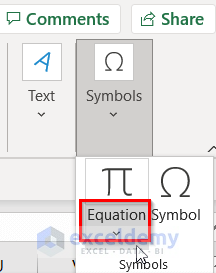
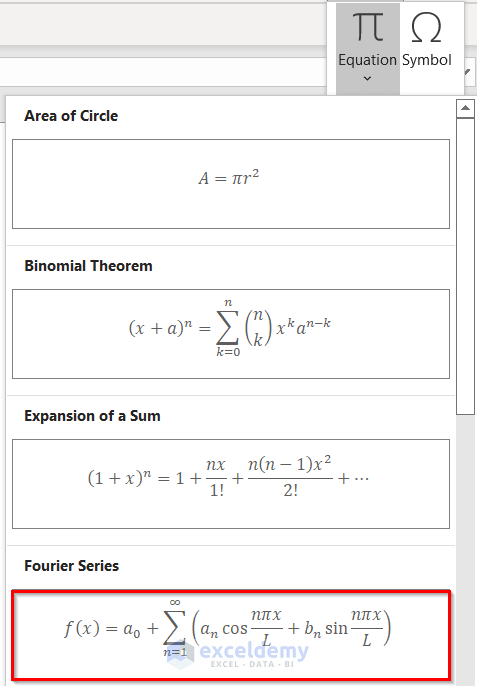
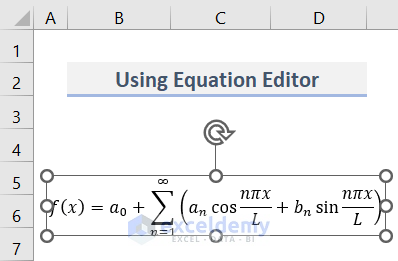
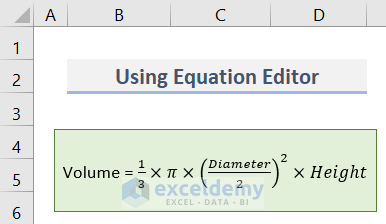

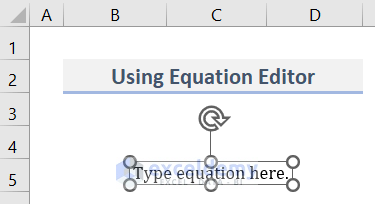
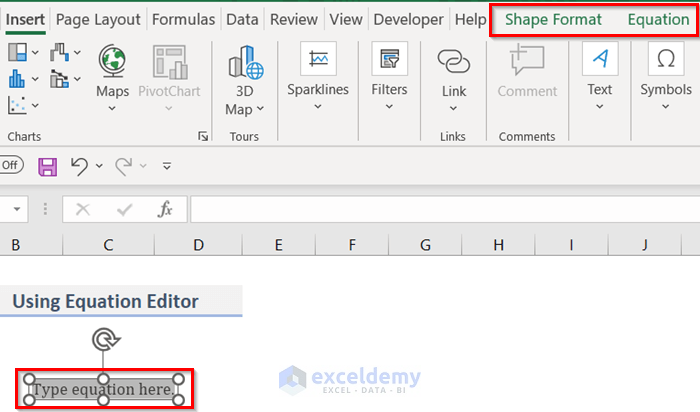

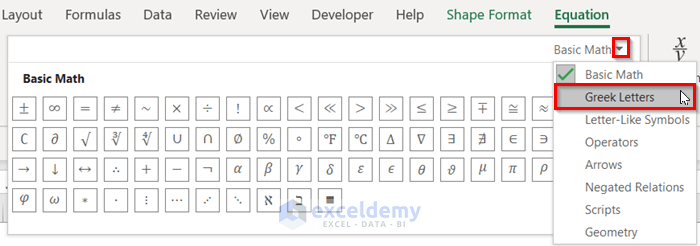
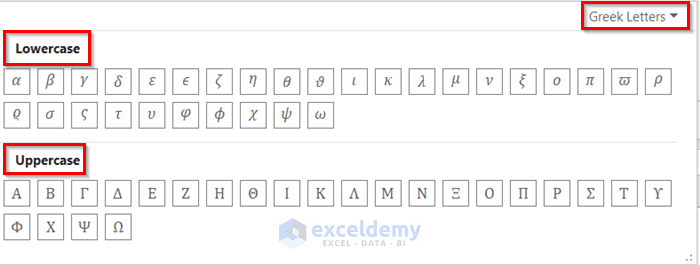


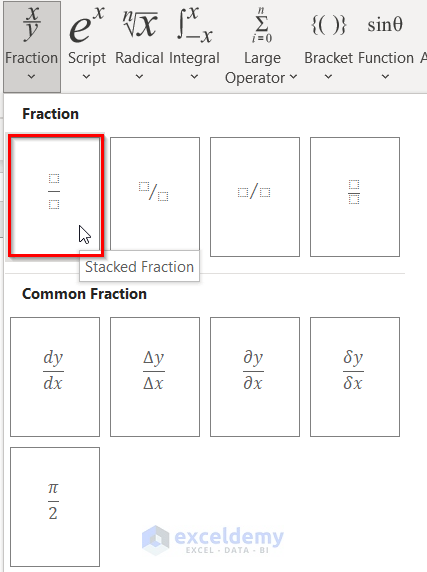
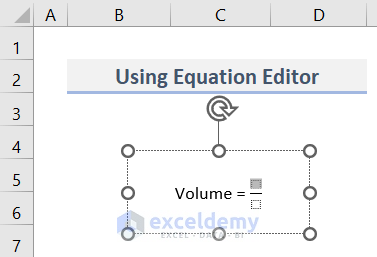
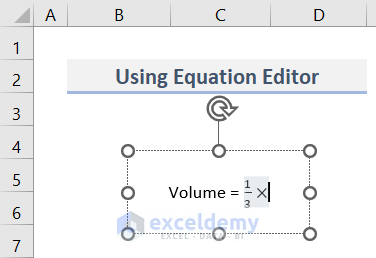
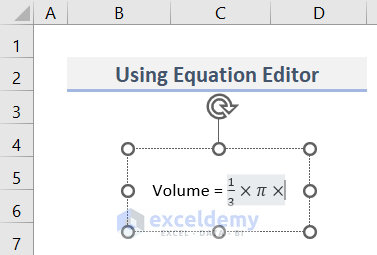
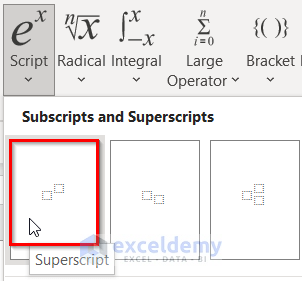

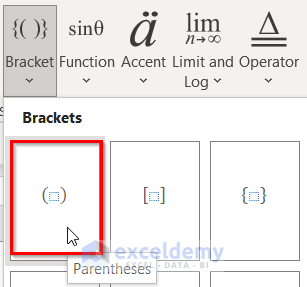
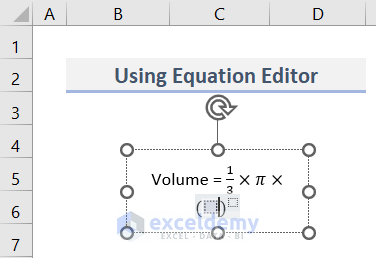
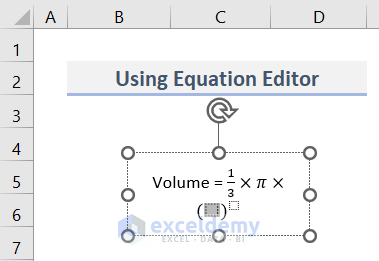
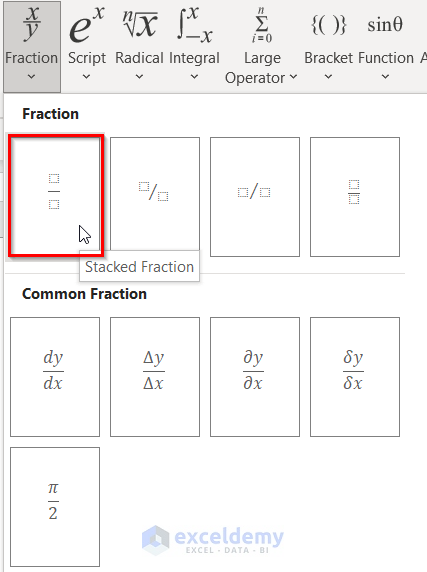
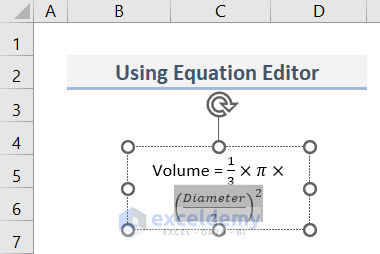
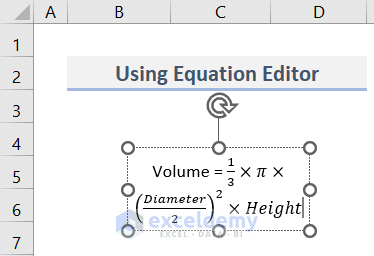
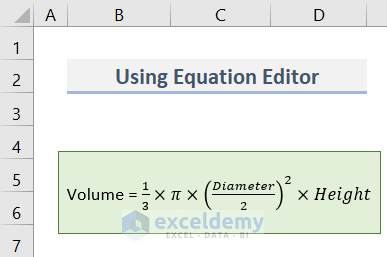
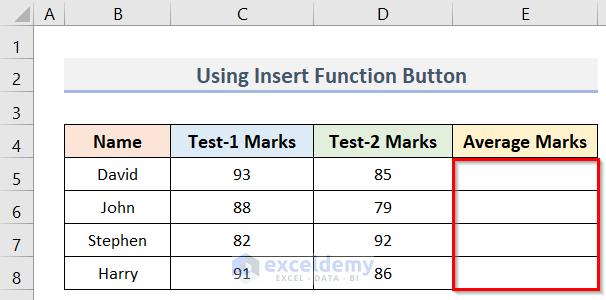
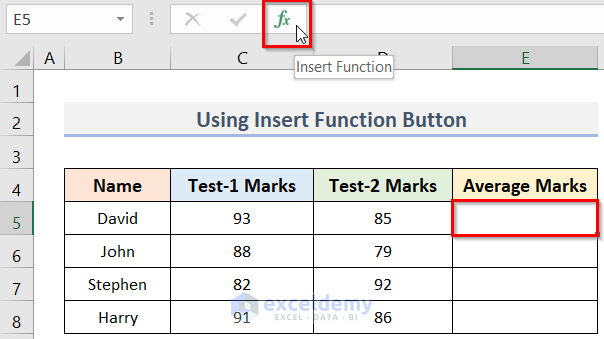
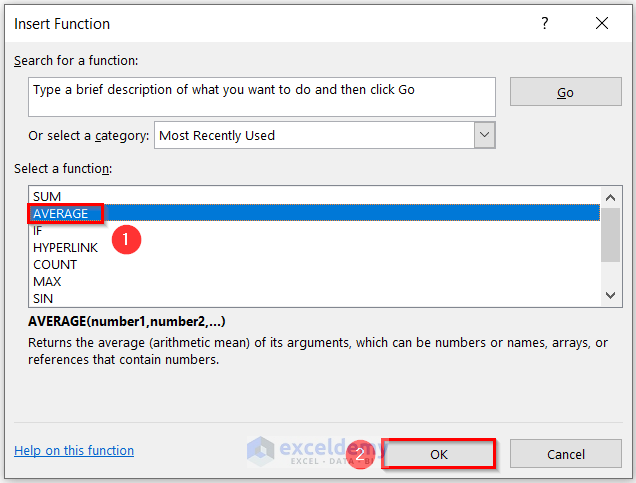
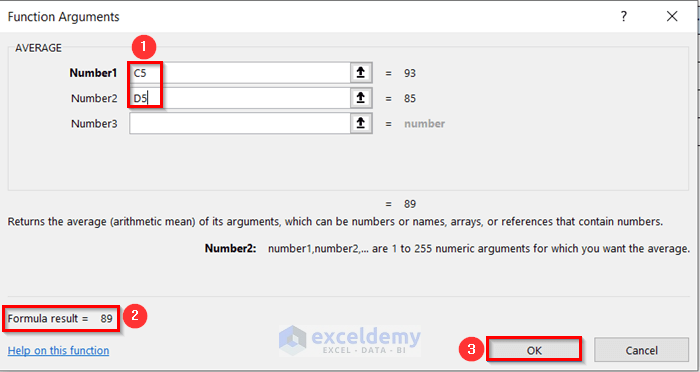
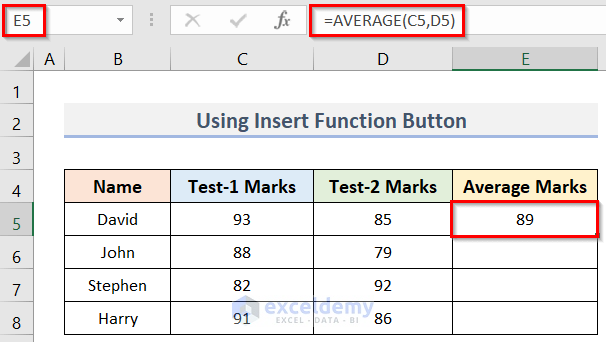
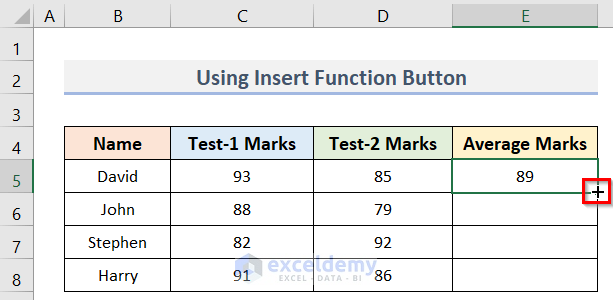
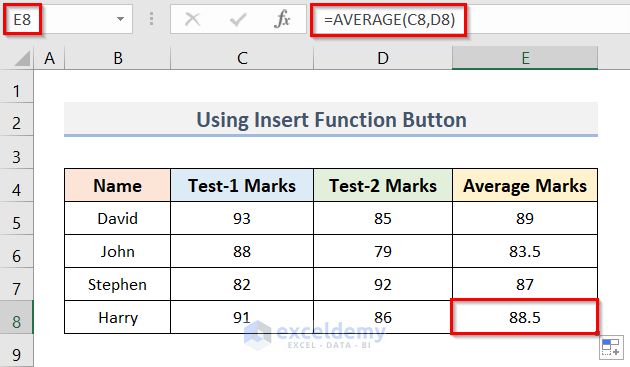
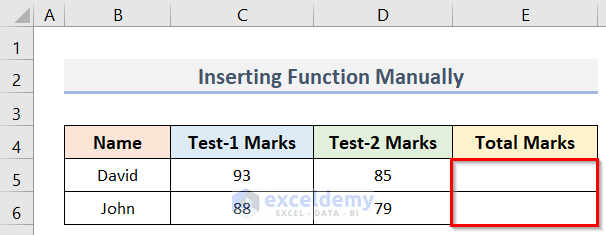
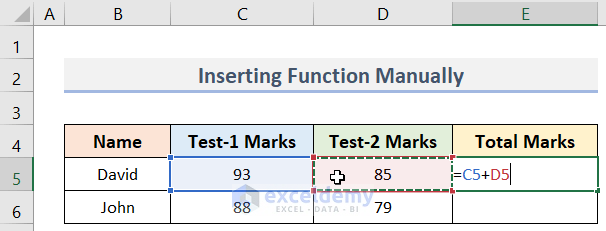
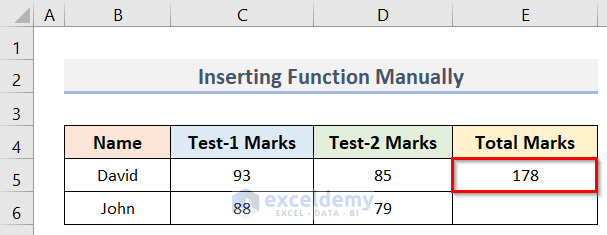
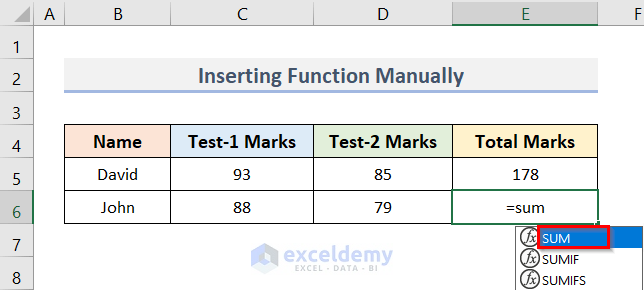
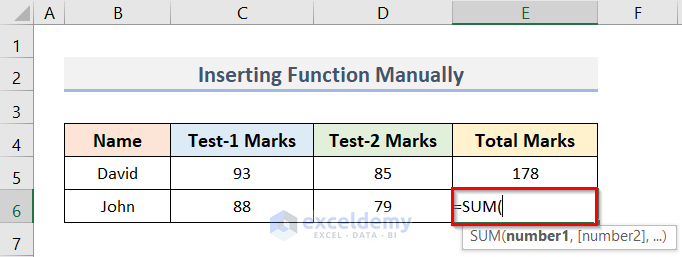
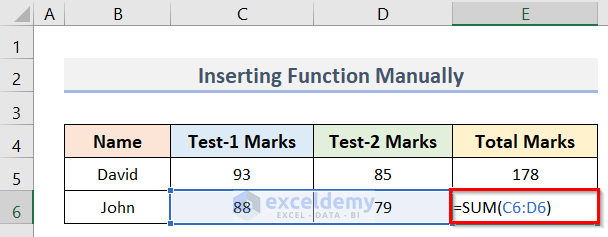
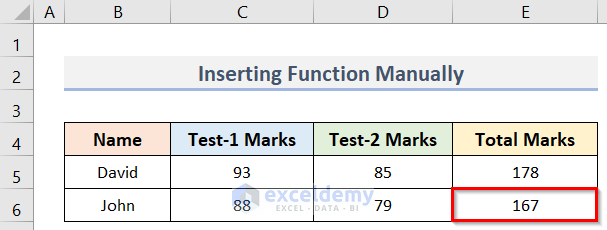
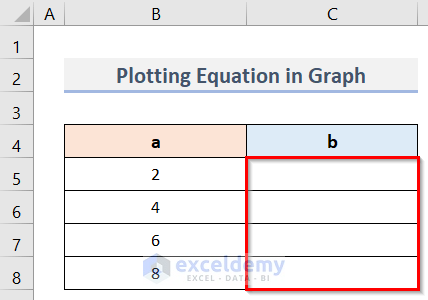
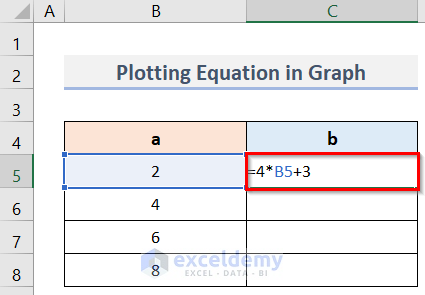
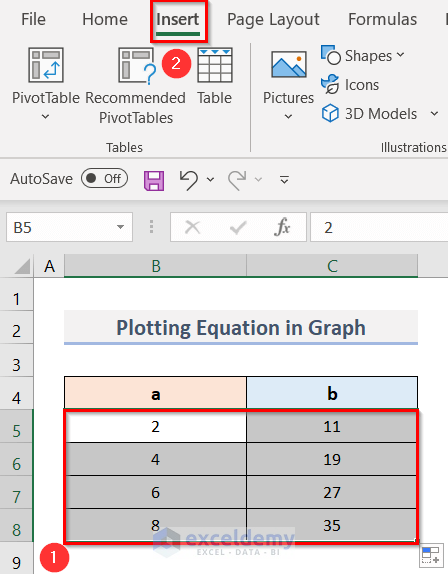

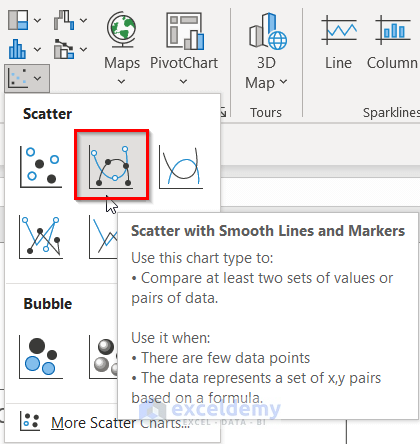
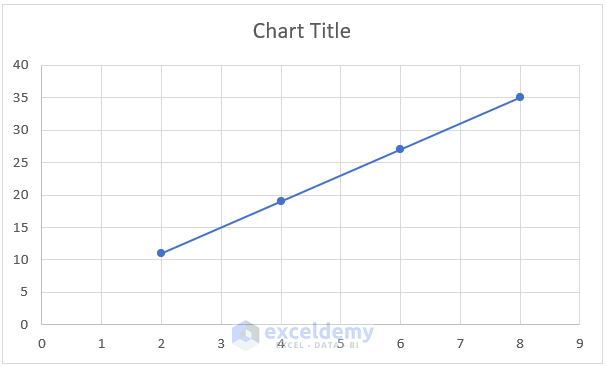
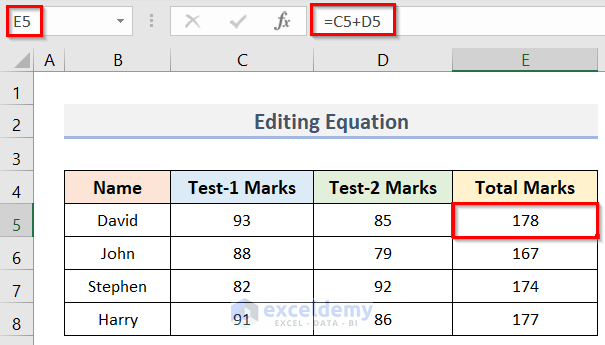
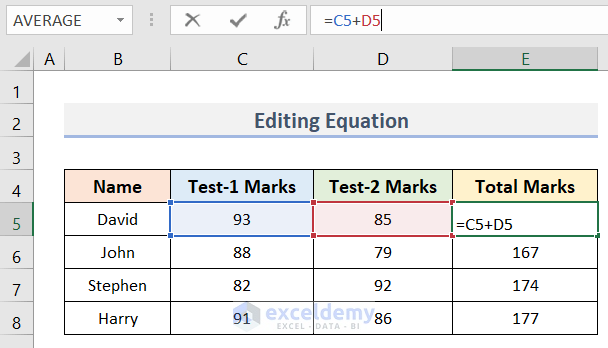
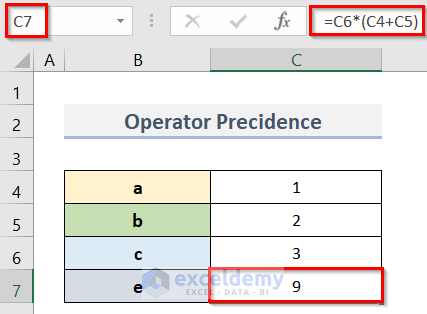



Great tip Kawser!
In Excel 2016 this is even easier since you can use the Ink Equation feature to create equations manually.
This is explained in more detail here: https://support.office.com/en-us/article/What-s-new-in-Excel-2016-for-Windows-5fdb9208-ff33-45b6-9e08-1f5cdb3a6c73
Thanks,
Orlando
Thanks Orlando for updating me 🙂
Regards
Kawser
I find the description totally incomprehensible. You instruct me to do something without explaining what I need to do and where to find it. You must assume I know nothing about this if teaching is you goal. It appears it is not. I have to be inside your head to follow.
Hi Bob,
Did you download the Excel file before you follow me? Please do so. I’ve explained the whole process with two real time examples. If you can create these two examples in the Excel file, I hope you will be able to understand the whole system.
Best regards
Kawser
Thanks Kawser, I found it pretty easy to follow – I practiced on your download file. It sure seems pretty time consuming. But, it does make a fine looking formula!!
Mike,
Thanks for your feedback 🙂
Kind regards
Dear sir, my question is- Is it possible to type equations in a particular cell,just like we type normal text,or type any equation between a sentence, if I want to make a mathematical question for my students, how can I do it.
Hi KRISHNENDU,
Thanks for your comment. An equation is not like a formula as it isn’t supposed to perform any calculation. You can’t enter an equation in a particular cell just like you do for a formula. What you can do here is that, you can adjust height and width of your “Equation Editor” box or the cell as if it looks like the equation stays in the cell. I think this can serve your purpose to some extent.
Regards.
These are don’t work. Question was how can insert the equation in cell in excel so that I can view the equations in the cell. Plz try to understand the question. You all guys answer that how to write equation. But question was not like that. Thank you.
Hi ABDUS SALAM,
An equation is not like a formula as it isn’t supposed to perform any calculation. You can’t enter an equation in a particular cell in Excel just like you do for a formula. What you can do here is that, you can adjust height and width of the “Equation Editor” box or the cell as if it looks like the equation stays in the cell. This can serve your purpose to some extent.
Regards.